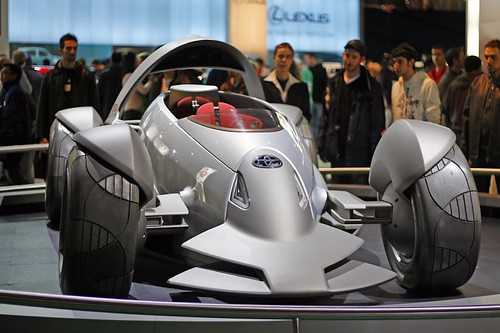Mazda 2009 RX8

RX-8 was designed with an athletically sculpted exterior that provides a sense of originality unrivaled in the marketplace today. The 2009 RX-8 received design enhancements that freshen the styling and give the RX-8 a new look, while maintaining the basic design theme. Refinements include restyled front and rear bumpers and front fascia; sporty, high-quality finish front and rear headlamps; and larger exhaust pipes (now measuring 90 mm across) and a new 5-spoke wheel design.

STYLING INNOVATION
The RX-8's interior boasts a comfortable and intelligently designed cabin. Minor enhancements were made for the 2009 RX-8 to provide a simple and functional interior design that supports driving pleasure. The center IP shape was redesigned to give a feeling of dynamic movement and a new steering wheel, and redesigned front and rear seats were also added. The rotary design element is incorporated in the interior of the RX-8 in creative ways, appearing in the seats. Through the use of advanced ergonomic research, Mazda engineers built optimum support in the front seats to enhance the thoroughly enjoyable driving experience.

Through-and-through, the RX-8 is a pure sports car that gives the driver an exciting and dynamic experience. For 2009, engineers improved body rigidity on the RX-8 through the addition of structural reinforcements, via a newly added trapezoidal shock tower bar and enhancing the local rigidity of the front-suspension tower areas. Also, the rear-suspension geometry has been reconfigured for better handling and driveshaft rigidity, lowering NVH levels and improving performance. In addition, the differential gear ratio on manual transmission-equipped cars is lowered from 4.444 to 4.777 for improved off- the-line performance. These performance changes give the RX-8 increased acceleration and performance, as well as even greater responsiveness — always a rotary engine and RX-8
hallmark.

DYNAMIC DRIVING EXPERIENCE
The 2009 Mazda RX-8 is available as either a 232-horsepower* 6-speed manual transmission, or a 212-horsepower* 6-speed Sport automatic transmission with steering-wheel-mounted paddle shifters for a Formula 1-style driving experience. The RENESIS engine is remarkably smooth and high revving — all the way to 9,000 rpm (7,500 rpm on Sport AT-equipped models). The RENESIS engine features side intake and exhaust ports with nearly 30 percent more intake port and twice as much exhaust port than its predecessors. The efficiencies gained through shortening the intake/exhaust overlapping period and using the larger intake and exhaust ports in delivering world-class performance. Through the incredible efficiencies of a rotary powerplant, an advanced three-stage intake system and an electronic throttle, the RENESIS engine delivers smooth, linear power on a grand scale.

ULTIMATE PERFORMANCE: RX-8 R3
The 2009 RX-8 will offer a new R3 trim level. Providing the very best in rotary-powered motoring, the R3 hearkens back to the R1 and R2 packages offered on the mighty third-generation RX-7, and adds a sport-tuned suspension with Bilstein® shock absorbers and front-suspension crossmembers filled with urethane foam for a smoother ride, minimized NVH and greater suspension control. On the visual side of the R3 trim level, a rear spoiler, side sills and sporty front bumper were added to give an aggressive appearance, along with 19-inch forged, aluminum-alloy wheels with high-performance tires. Inside, the R3 includes a 300-watt Bose® Centerpoint® Surround System with AudioPilot® noise compensation technology, Bluetooth® hands-free phone system, front Recaro sport seats with leather side bolsters, leather-wrapped parking-brake handle and Mazda Advanced Keyless Entry and Start System.








































